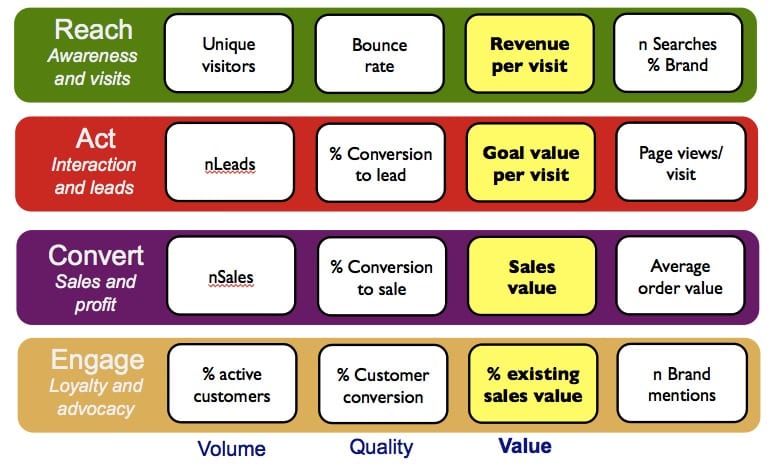The Ultimate Guide to Connecting with Customers in the Digital Era (Unlocking the Wisdom of the Crowd)
Introduction
The connected customer is at the center of buying decisions that drive product and brand patronage. The connectedness enabled through the mobility of communication devices and tools is creating market/ customer disruptions.
The connected customer has a high interaction capability driven on the basis of multiple communication channels that hitherto was thought impossible. The interaction is exemplified through the mechanism of the F-factor; followers, fans, and friends.
Understanding Customer Personas

There are different personalities customers have that differentiate them
- Traditionalist: “ I want to find all the product information online”
- Carefree: “I want the pleasure to find out the best offer and buy without worries”
- Meticulous: “Internet search always shows the best quality-price ratio”
- Rational: “I want the convenience to buy online and spend more time with my family”
- Uninhibited: “I easily buy sophisticated high-quality products”
Three Ways to Connect with the Customer

- Mobile Connectivity: The customer of the digital era is a roaming customer through the mobility of the mobile handset
- Experiential Connectivity: With mobile connectivity comes experiential connectivity that increases the level of connection between the customers and sellers
- Social Connectivity: The era of connected customers is driven by social connectivity where customer buying decision-making is a socially inspired outcome. The F-factor: followers, fans, and friends define the social connectivity of the digital era of customers.
Touchpoints on the Customer Journey

Each time a customer wants to make a purchase, there are processes involved:
- Pre Purchase: PR, Direct Sale, Social media, Sales, Word of Mouth, Email
- Purchase: Events, Web, E-commerce, Packaging
- Post Purchase: Case studies, Customer service, Surveys, Social media
Unlocking the “wisdom of the crowd”
The connected customer is the outcome of the evolving marketing ecosystem. The preponderance of communication is shifting from one-way to two-way/dual interaction between the brand and the customer. The connectivity is fueled by the emerging young, urban and middle-class demographics with strong mobility and connectivity. The demographic buying decision is characterized by:
- Mobility
- Fast pace
- Search for information on mobile devices
- Research prices and quality online
- Purchase decisions can be made anytime and anywhere
- Love physical experiences of the purchase
Online VS Offline: The digital era is considered an online-only channel because of its assumed “wisdom of the crowd effect” but incidentally the offline channel is very relevant in customer engagement. In essence, online and offline channels have the capacity; to co-exist together, complement each other, and create high-touch interaction as a basis for differentiation.
Informed vs Distracted Customers: As a result of the volume of information out there in the market, attention has decreased from 12 seconds to 8 seconds. However, customers have access to a rich disposal of information from communities of friends, family, fans, and followers. Conversations and engagements have also inspired relationships in the digital era between brands and customers.
Negative Advocacy VS Positive Advocacy: the advocacy of brands by customers is heightened in the digital era as a result of engagement and conversational mechanisms, reviews, comments, and ratings, These mechanisms foster customer advocacy across communities of friends, fans, families, and followers.
Connectivity Outcomes
Amazon, Konga, Jumia, JIJI, Autocheck
- Physical experience
- Online experience
Netflix, ShowMax, Super TV, Skitting
- Screens as the basis of interaction
- Smartphones, tablets, laptops, television
Spotify, AppleMusic, UduX, Boom, Ndondo
- Collaboration and Co-creation
- Over 11 billion are connected on mobile devices (Cisco research)
Customers of the digital era – Youths

Characterized as trendsetters, early adopters, and game-changers with a large appetite for music, food, fashion, sports, movies, and technology.
Nigeria’s youth population is estimated at 33.6 million, representing 16.8% aged between 15-35 years, but the population aged between 0-14 is 43.69%.(www.wikipedia.org)
Mobility and connectivity are their devices and tools for engagement, conversations, and interactions. Because they are early adopters and trendsetters it rubs off the market mainstream
The mind share of the market is touted as belonging to the youth segment as a result of its trend-setting, game-changing, and early adopters characterization.
Customers of the digital era – Women

Women are a critical market in the digital era ecosystem to grow the market share. Marketing to women has specifically been of interest to brands and Rena Bartos in her book “Marketing to Women Around the World’’ has categorized the women’s segment into; stay-at-home housewives, plan-to-work housewives, and working women with a job/career woman.
Each of the segments typically positions the woman as the de facto household manager, as most family buying decisions are done by the woman.
Further, the power of the woman in buying decision-making is buttressed by their ability as information collectors and holistic shoppers.
Customers of the digital era – Netizens
The netizens believe in the democratization of the internet and it is at the heart of the growth of the internet. They see the internet as a convergence of content sharing for the benefit of all.
The United Nations has estimated that there are 3.4 billion internet users and more growth is expected in the future.
Netizens occupy a special place in internet consumption because of their social connectivity, expressive evangelism, and content contributors.
Forrester Research has through their Forrester Social Technographics categorized internet users’ hierarchy as follows: inactive, spectators, joiners, collectors, critics and creators. Collectors, critics, and creators best describe the netizens as they actively contribute to the internet.
Using digital media to support customers

Reach: Build awareness on other sites and in online media and drive web presence. KPIs:
- Unique visitors and fans
- Audience share
- Revenue or goal value per visit
Act: Engage the audience with the brand on its website or other online presence. KPIs:
- Bounce Rate
- Pages per visit
- Lead conversion
Convert: Achieve conversion to marketing goals such as fans, leads, or sales on web presences and online. KPIs:
- Conversion rates
- Sales revenue and Margin
Engage: Build customer and fan relationships through time to achieve retention goals. KPIs:
- % active hurdle rates
- Fan engagement
- Repeat conversion
Digital Era and the new customer path

The emergence of digital marketing as a communications medium has brought changes and revolutionized the marketing value chain and customer journey in purchase decision outcomes.
Hitherto, communication and advertising were based on the “AIDA concept”; Attention, Interest, Desire, and Action but with digital marketing, the four A’s have transformed into five A’s: Awareness, Appeal, Ask, Act and Advocacy.
With digital marketing came increased mobility and connectivity resulting in limited time to engage with the consumers. The relevance of brand owners in the new environment of marketing is engendered through community activation of the F-factor (friends, family, fans, followers). The power of the individual consumer is driven on the basis of community and trusted social circles. As a result, marketing organizations need to continue to improve on the critical consumer touch points so as to delight the consumer.
Intensification of communications, strengthening of channel presence, and improvement of customer interface are suggested to build the touchpoints required to engage with the consumers.
The series of outcomes driving the connectivity and mobility era include community activation, advocacy, recommendations, and conversations
The connectivity and mobility era makes a case for new customer paths driven by awareness, appeal, ask, and advocacy. The new customer path occasioned by the connectivity and mobility era recognizes the importance of customer advocacy to drive patronage and repeat purchases.
o Awareness – Passive exposure to a long list of brands through past experiences, marketing communications, or the advocacy of others. The awareness stage is the gateway to the entire customer path and engenders message processing towards identifying and narrowing down the long list to shortlisted brands under consideration.
o Appeal – Following awareness and shortlisting, brands that connect at the awareness stage resulting in memorability and WOW experiences throw up the customer appeal towards its patronage. Appeal to a particular brand must be very strong to minimize possible switch to a competing brand. Appeal varies across the various customer segments. As a result, organizations need to understand the drivers of customer appeal.
o Ask – At the asking stage the consumer is engaged in seeking to enquire from friends and other sources such as online forums for reviews and recommendations. Researching about the brand and coming up with a short list of brands from the reviews necessitates conversations that would result in a high or low level of curiosity from customers. Low curiosity could result in low brand appeal while high curiosity results in high brand appeal. Conviction at the ask stage leads to the action.
o Act – The point of a decision having gone through awareness, appeal, and ask. At this stage, ownership and user experience are key factors for future purchase consideration by the consumer.
o Advocacy – Customer retention, and repurchase are some forces energizing advocacy by the consumer. At the point of advocacy, consumer loyalty is certain and past experiences ensure that recommendations and word-of-mouth advocacy are certain from the consumer. Advocacy engenders positive stories and evangelizing about the brand by the consumer.
However, the customer path is not a linear journey that passes from awareness to advocacy as each stage is driven by the product category. Consumables have different customer paths as compared to large ticket transactions such as real estate and cars. Importantly, it is applicable across all industries.
Tag:marketing

